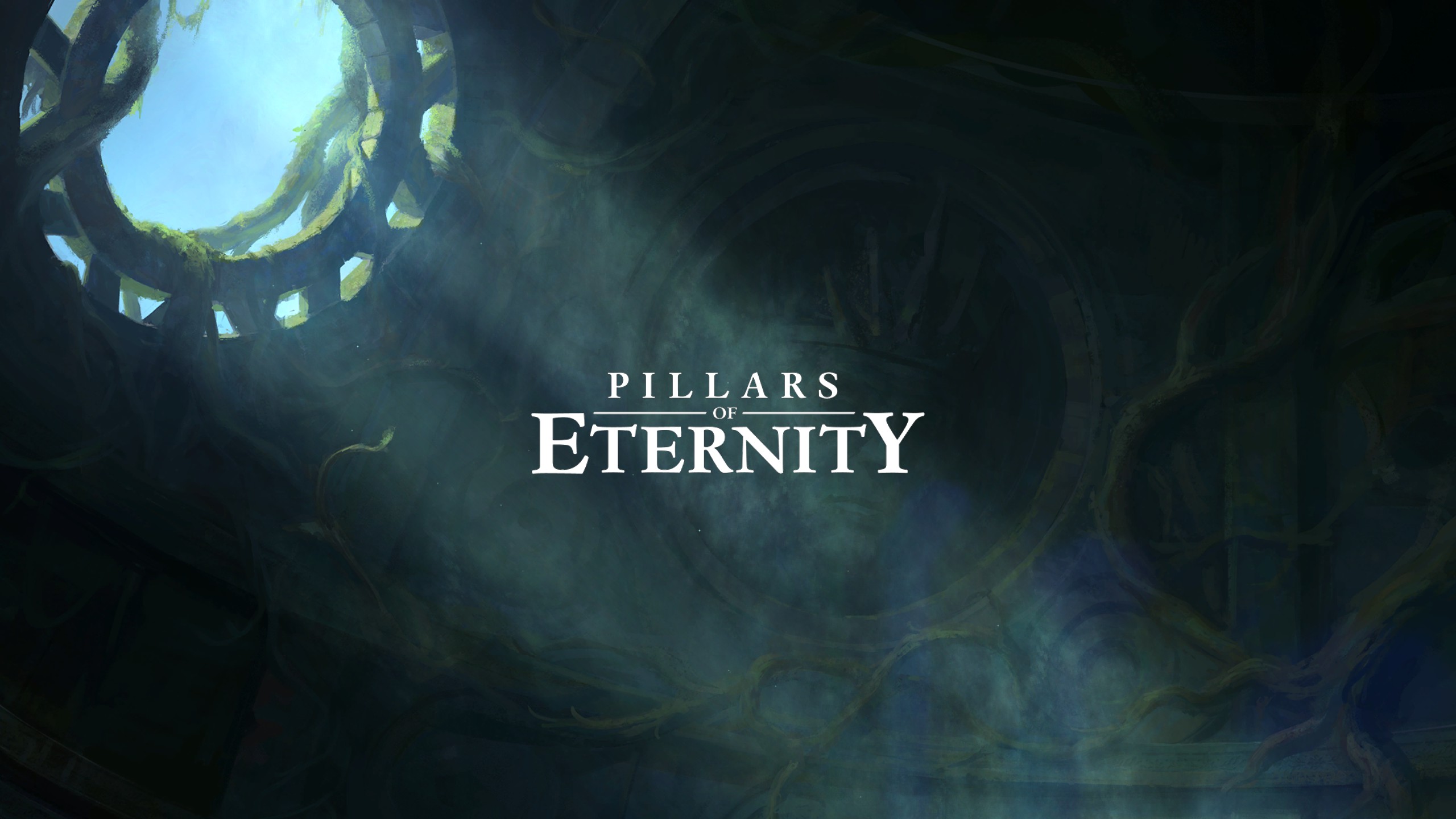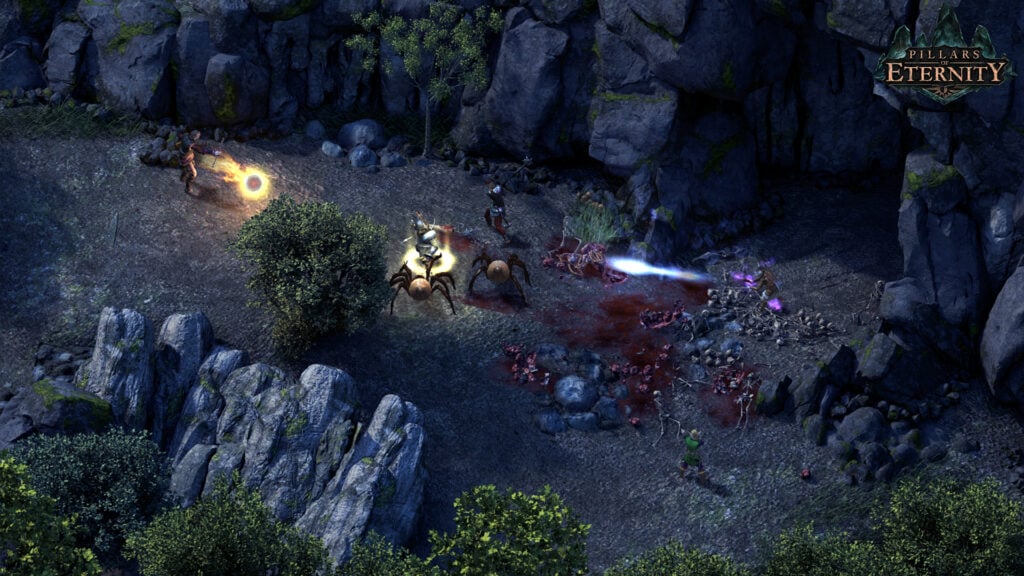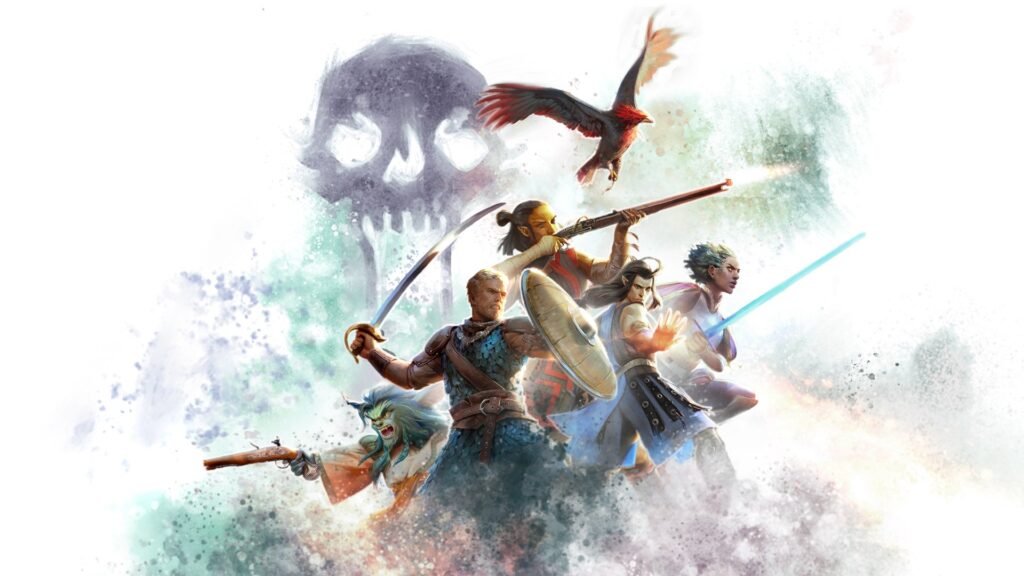Games That Changed Our Lives
Games That Changed Our Lives: How Pillars of Eternity Redeemed a Genre

In December of 1998, BioWare and Black Isle Studios collaborated to create an ambitious isometric RPG based on the Forgotten Realms setting of the D&D tabletop games. Embracing a design philosophy focusing on player-driven choices and a strong devotion to the in-depth RPG elements of its tabletop roots, BioWare would go on to leave their first footprint in gaming’s still-budding history with the release of Baldur’s Gate. They had redefined what RPGs could be, and altered the gaming landscape in a way that still echoes in gaming culture today. I was also six years old when it came out.
Having grown up in a Nintendo 64 household, my formative years saw a great deal of Zelda, Star Fox, and a nice helping of Pokémon Stadium. We had a PC, but didn’t use it for gaming very much outside of the occasional foray into The Oregon Trail for a lovely dose of grim reality (“Dad succumbed to cholera in the night” is a lot for a six year old to process). My brother, who is seven years my senior, shaped a lot of my gaming habits at the time; I would usually end up playing whatever he was playing. He eventually dipped his toes into the PC side of things, and with that came a whole catalogue of new games that would go on to change my life; namely EverQuest, which is where I learned how to type while playing alongside my mom and brother. Of all the PC games we had, I vividly remember a brown tri-fold case housing six disks with a scary red-eyed skull on the front.

Six whole disks! Can you imagine what kind of game would need six disks? That game has to be huge. I had to know just how special this Baldur’s Gate game had to be to merit that much pomp and circumstance. So, at probably ten years old, I inserted disk one and prepared myself for an unprecedented epic that would rock the very foundations of what I thought videogames could be.
I never made it out of the tutorial.
As it turns out, the commitment to a D&D style ruleset proved a little too complex for a ten year old that grew up playing games whose complexity amounted to “hit things with sword.” With absolutely no knowledge of D&D whatsoever, my ten year old brain was practically sizzling trying to read through ability descriptions telling me about “saving throws,” “charisma checks,” and whatever the hell “THAC0” was. Walls of unvoiced text would greet me as I talked to the first NPCs in Candlekeep, and I quickly felt as if I was in well over my head. While it was no fault of Baldur’s Gate, it was clear that I wasn’t properly equipped to tackle this kind of game yet, and that stigma of confusion would hang over the cRPG genre for years to follow as I grew up. Every time I would see that isometric camera angle, I would think “Oh, it’s one of those Baldur’s Gate type games; I just don’t get those”, and go about my merry way.
With cRPGs off the table, I found myself thoroughly enjoying all kinds of more accessible RPGs throughout the years. Games like Mass Effect, The Elder Scrolls IV: Oblivion, and Final Fantasy 10 had sparked my interest in the genre, and I was constantly hungry for these types of games that offer character build variety and large, epic stories in which my character and decisions have influence. While it would be a few years before my redemption arc would come to fruition with the cRPG genre, my path towards that arc found its start in the most unlikely of places: A lower-budget Bethesda spinoff made over a mere 18 months by a small company with a big heart for old-school roleplaying.
In the interest of not having this article digress into an obsessive love letter to Fallout: New Vegas, suffice it to say that Obsidian had garnered a ravenous new fan with their foray into the Fallout universe. Branching dialogue, large variety in character builds, smartly written, and a narrative that felt responsive to the player’s actions in a way I’d never experienced before; I was blown away, and I was whole-heartedly on board with these Obsidian folks wherever they decided to go. If you wanted to call me a “fanboy,” I wouldn’t have much of an argument to the contrary. I was all in on these guys, and in 2015, my devotion would be put to the test.

Following a successful Kickstarter campaign, Obsidian would debut a brand new original IP with Pillars of Eternity, a passionate labor of love and a spiritual successor to the game that had completely fried my circuits more than a decade beforehand. I looked on with growing apprehension as my darling Obsidian rolled out gameplay videos showcasing their commitment to their cRPG roots. That isometric camera, the D&D-esque ruleset, the real-time-with-pause party combat… They were making “one of those Baldur’s Gate type games.” My fears had been realized, and the darkest timeline had been set in motion.
My heart was being torn asunder; on one hand, my gaming sweetheart Obsidian was coming out with a huge new RPG that they had clearly poured their hearts and souls into. On the other hand, that huge new RPG just so happened to belong to a genre that I held in irrational contempt. A battle was raging at the very core of my soul, and it proved to be one that would alter the course of my gaming future irrevocably. I’ve often heard people say that “love triumphs over hate,” and those people may well be onto something; my unhealthy admiration for Obsidian had won out over my childhood disdain for the isometric cRPGs. It was time to bite the bullet and confront that which I had so hastily written off for almost 15 years.
When it came to my prejudice against an entire genre of games, I was delighted to discover that I had never been so wrong. My first steps into Pillars of Eternity certainly came with a learning curve, but I found myself picking up the intricacies of the D&D style rulesets rather seamlessly. As it turns out, I had matured at least somewhere along the way between the ages of 10 and 23 (allegedly), and learning the nuances of isometric cRPGs was nowhere near the daunting task I remembered as a kid (it probably helped that BioWare had tricked me into playing some well disguised cRPG-lites over the years with Dragon Age: Origins and Star Wars: Knights of the Old Republic). With renewed understanding and a fresh start, I was ready for Pillars of Eternity to act as my ambassador to the genre.
And what an ambassador it proved to be.

Once I had an understanding of the mechanics, it was only a matter of time before the game had completely sucked me in. The first thing that stuck out to me right off the bat was the sheer creativity of the writing. Given the cinematic limitations of the Unity Engine the game runs on, Obsidian was forced to rely on depicting actions and atmosphere almost entirely through descriptive writing. The amount of text devoted to describing everything from large set-pieces to the most miniscule detail about a character’s physical appearance gives the game an almost book-like quality, and the writing team at Obsidian proved to be more than capable of carrying that kind of commitment. The writing in Pillars of Eternity is of such high calibre that it actively makes me strive to be a better writer; to see such a massive undertaking in terms of quantity of written text that at no point sacrifices quality is to witness a monumental achievement. Instead of being hobbled by the limitations of the game engine, the necessity of having to rely on writing to spark the player’s imagination in place of straightforward spectacle is easily Pillars of Eternity’s greatest strength.
The game world itself is remarkably fleshed out; the expansive lore gives the game a unique flavor that helps set it apart from other dark-fantasy settings like the Dragon Age or Witcher universes. While swords and magic are commonplace in Eora, we also see a splash of more modern innovations in the form of flintlock guns and the infancy of electricity as a power source very much in the vein of Nikola Tesla. The pantheon of gods in Eora is unambiguously real (well, more or less…), and they’re often petty and contentious with one another. They bicker relentlessly and aren’t afraid to pick sides in conflicts amongst other gods, drawing a distinct real-world parallel with the overly-emotional and often reckless nature of the gods seen in the Greek pantheon with the likes of Zeus and Poseidon.
Wars are waged and ended at the will of these fickle gods, resulting in a world whose history is littered with civil unrest and bloodshed. Some of the companions that accompany the player hold conflicting religious beliefs, serving both as expositional world-building cloaked in emotional conflict and as a narrative driving force for the diverse cast of excellent characters Pillars of Eternity has to offer. The world of Eora strengthens the story of the game, and the story of the game enriches the world of Eora. It’s a wonderful symbiosis that serves as a testament to the excellent writing and intricate narrative design that has been so prominent throughout Obsidian’s already impressive catalogue.
And I was prepared to miss out on all of it because Baldur’s Gate scared me off when I was ten. Pillars of Eternity exposed me to the potential of what these old-school cRPGs could be; it has not only won me over to the genre, but has also solidified itself as what I would argue to be the highest possible watermark in terms of writing and world-building in any genre (well, maybe in a toss-up with Disco Elysium). While I couldn’t have asked for a better usher into the world of cRPGs, I almost feel spoiled for having started so strong. Make no mistake, I’ve come to play some excellent isometric RPGs, but none of them have quite captured that spark that Obsidian brought to the table. Sure, fantastic titles like Pathfinder: Kingmaker offer a much greater deal of depth in terms of character builds and an absolutely staggering amount of RPG mechanics, but the writing itself feels so pedestrian at its core. I probably never would have played the near-masterpiece that is Divinity: Original Sin II without Pillars, a game that boasts a far superior combat system and a degree of mechanical freedom within a game engine that blows my mind to this day, but the world-building and descriptive text can’t help but fall short in the long shadow of Obsidian’s team. It’s like introducing a friend to mobster movies with GoodFellas; you’ll get them hooked with the best, but nothing that follows will ever quite match that introduction.

And this isn’t to say that Pillars of Eternity is a perfect game by any stretch; I would argue that titles like Divinity: Original Sin II and Pathfinder: Kingmaker have aspects that far outshine Pillars of Eternity, but I guess I’m just a sucker for great writing. It’s why I’ve come to gravitate towards titles like Planescape: Torment, Disco Elysium, and Obsidian’s own follow-up effort Pillars of Eternity II: Deadfire in recent years; when the writing is this good, they’re like a book you can’t put down. As an aspiring (and thoroughly mediocre) writer myself, they’re the kind of experiences I feel gaming does well to offer our world; games that fuel my passion to improve my own “craft” (if you could call it that).
I have since gone back and played through the entirety of Baldur’s Gate, and while I admire it as a relic of innovation in its time, I would say it’s modern spiritual successors have perfected that which it laid the foundations for. It’s a game I respect more than I enjoy, and I appreciate everything it accomplished in terms of paving the way forward for RPGs as a whole. As much as I gush about Obsidian and Pillars of Eternity, I know all too well they wouldn’t be here without Black Isle and BioWare. It’s a fascinating and intricate legacy they’ve carved into gaming’s heritage over the past 23 years, and I consider myself privileged to have finally witnessed it first-hand after all this time.

-

 Features4 weeks ago
Features4 weeks agoFarewell to a Beloved 13-Year-Old Isekai Anime That Brought Us Endless Laughter
-

 Technology3 weeks ago
Technology3 weeks agoGamification and Productivity: What Games Can Teach SaaS Tools
-

 Features3 weeks ago
Features3 weeks agoThis Upcoming Romance Anime Might Just Break the Internet; Trailer Just Dropped!
-

 Features2 weeks ago
Features2 weeks agoDon’t Watch These 5 Fantasy Anime… Unless You Want to Be Obsessed
-

 Culture3 weeks ago
Culture3 weeks agoIs the Gaming Industry Killing Gaming Parties?
-

 Features4 weeks ago
Features4 weeks agoWait, What?! Tom & Jerry Just Turned Into an Anime and It’s Glorious!
-

 Features1 week ago
Features1 week ago“Even if it’s used a little, it’s fine”: Demon Slayer Star Shrugs Off AI Threat
-

 Game Reviews4 weeks ago
Game Reviews4 weeks agoCall of Duty and the Myth of Military Realism: Tactical or Just Tacticool?
-

 Guides4 weeks ago
Guides4 weeks agoHow to Earn and Spend Diamonds in Mobile Legends
-

 Technology3 weeks ago
Technology3 weeks agoDigital Cash: For Gamers Who Don’t Ask Permission?
-

 Technology4 weeks ago
Technology4 weeks agoDiscover the Top PDF Drive Tool Today
-

 Guides4 weeks ago
Guides4 weeks agoHow to earn a lot of gold in WoW The War Within, a step-by-step guide when playing as a druid


















